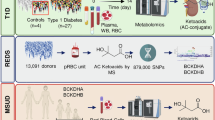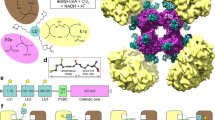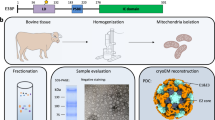Abstract
ABSTRACT: Lactic acidosis and accumulation of 3-hydroxybutyrate and other citric acid cycle intermediates were found in an infant with a lethal syndrome of metabolic acidosis and renal tubular acidosis. Nevertheless, the patient was relatively well for 4 mo of life. The activity of the pyruvate dehydrogenase complex, 2-oxoglutarate dehydrogenase, and branched-chain keto acid dehydrogenase were all reduced to levels 9 to 29% of control. In contrast, the activity of lipoamide dehydrogenase was normal. The conversion of 1-14C-leucine and 1-14C-valine to 14CO2 and of U-L-14C-valine to its major metabolic product 3-hydroxyisobutyric acid by fibroblasts derived from the patient was less than 5% of control. Cultivation of the patient's fibroblasts in medium enriched with lipoic acid markedly improved these in vitro conversions of leucine and valine.
Similar content being viewed by others
Log in or create a free account to read this content
Gain free access to this article, as well as selected content from this journal and more on nature.com
or
Author information
Authors and Affiliations
Rights and permissions
About this article
Cite this article
Yoshida, I., Sweetman, L., Kulovich, S. et al. Effect of Lipoic Acid in a Patient with Defective Activity of Pyruvate Dehydrogenase, 2-Oxoglutarate Dehydrogenase, and Branched- Chain Keto Acid Dehydrogenase. Pediatr Res 27, 75–79 (1990). https://doi.org/10.1203/00006450-199001000-00020
Received:
Accepted:
Issue date:
DOI: https://doi.org/10.1203/00006450-199001000-00020
This article is cited by
-
The spectrum of pyruvate oxidation defects in the diagnosis of mitochondrial disorders
Journal of Inherited Metabolic Disease (2015)
-
Magnetic resonance imaging in lactic acidosis
Journal of Inherited Metabolic Disease (1996)
-
Neonatal Fanconi syndrome due to deficiency of complex III of the respiratory chain
Pediatric Nephrology (1995)



